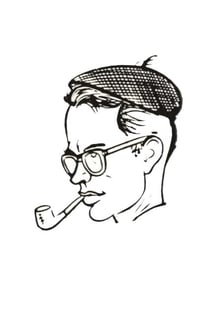

MASTERS OF ANIMATION | Pavao Štalter Retrospective
Pavao Štalter – Master Artist of the Zagreb School
Pavao Štalter is one of the classics of the Zagreb School of Animation. He dedicated the largest portion of his professional life to animation and in 1958 he started working for Zagreb Film, at first as a screenwriter, then an illustrator and animator, and soon he tried his hand at directing. Wearing different hats, he took an active part in the organisation of our festival for many years, as well.
As an individual author, he could be categorised as stage two of the School, the one Ronald Holloway claims began after 1963, separated by the same author into two trends: slapstick and visual art. His formal education includes a BA from the Zagreb Academy and he is considered one of the most prominent representatives of the artistic current, together with his lifelong friend and fellow animator Zlatko Bourek. They became and remained inseparable as students of the same high school class in Osijek.
It is interesting to mention that a year after them Borivoj Dovniković Bordo attended the same high school. Although artistic style is what he will remain remembered by in Croatian animation, Štalter on several occasions tried his hand at short slapstick films, albeit of somewhat darker hues than other filmmakers. He collaborated on the fourth season of the Professor Balthazar serial, directing four films, as well as on the serial ABird and a Worm and the Vacuum episode.
Štalter’s first auteur film is The Fifth One (1965), an animated (slapstick) miniature on persistence co-directed by Zlatko Grgić. Already in 1969, co-directed by Branko Ranitović, he created his most famous and important piece The Mask of Red Death, based on Edgar Allan Poe’s tale. In this technically demanding cut-out film he demonstrates the entire lavishness of his artistic talent to which he always returned, as testified by his films The Horse (1972) or Wiener Blut (2014).
Made in collaboration with Bourek, Wiener Blut is interesting on many levels and can to some degree be considered the last classic Zagreb School style film – both Štalter and Bourek insisted that the film be made on 35 mm film, on cel and in 1:1.33 ratio, a standard technology from the peak of Zagreb School’s fame, which gives the film, next to its visual style and despite the dramatic and tragic subject of the Holocaust, a particularly romantic note.
Daniel Šuljić


